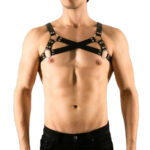When it comes to outfitting your kitchen, the right kitchen equipment can make all the difference in your cooking experience. High-quality tools not only enhance your culinary capabilities but also provide lasting value, saving you money and frustration in the long run. In an age where trends come and go, selecting equipment that stands the test of time is essential. Here are key considerations to help you choose kitchen equipment that remains durable and reliable for years to come.
1. Assess Your Needs
Before diving into purchases, take a moment to evaluate your cooking habits and needs. Are you a casual cook, a home chef, or a professional in a commercial kitchen? Understanding how you intend to use your kitchen equipment will guide you in selecting the right tools. Make a list of must-have items versus nice-to-have gadgets. This clarity helps prevent impulsive purchases and ensures you invest in equipment that will truly serve your cooking style.
2. Opt for High-Quality Materials
The materials used in kitchen equipment greatly influence durability and performance. Invest in tools made from high-quality, long-lasting materials like stainless steel, cast iron, or heavy-duty plastic. Stainless steel is resistant to rust, corrosion, and staining, making it a popular choice for pots, pans, and utensils. Cast iron cookware, known for its exceptional heat retention, can last a lifetime when properly cared for. Avoid flimsy materials that may warp or break easily, as they will require frequent replacements.
3. Consider Versatility
Choosing versatile kitchen equipment can extend its lifespan and usefulness. Look for tools that can perform multiple functions or adapt to various cooking methods. For example, a multi-cooker can pressure cook, slow cook, sauté, and steam, effectively replacing several single-use appliances. Similarly, a good food processor can chop, slice, dice, and even knead dough. Investing in versatile tools not only saves space but also ensures you get more value out of each item.
4. Prioritize Functionality and Design
The design and functionality of kitchen equipment play a significant role in its longevity. Tools should be easy to use and comfortable to handle. Ergonomically designed utensils, for example, reduce the risk of strain during prolonged use. Additionally, equipment that is user-friendly often encourages regular use, which means you’re more likely to appreciate its value over time. Look for features such as adjustable settings, non-slip handles, and easy-to-read measurements to enhance usability.
5. Read Reviews and Recommendations
Before making any purchase, take the time to research and read reviews from other consumers. Online reviews, cooking blogs, and recommendations from friends or family can provide valuable insights into the durability and performance of specific kitchen equipment. Look for patterns in feedback, such as comments on longevity, ease of use, and manufacturer support. This information can help you avoid low-quality products and focus on trusted brands known for their reliability.
6. Test for Performance
Whenever possible, test kitchen equipment before purchasing. If you’re in a store, try out utensils or small appliances to gauge their feel and performance. For larger items like ovens or ranges, consider attending cooking demonstrations or seeking out showrooms that allow you to see the equipment in action. Pay attention to how each item operates, its responsiveness, and whether it meets your cooking needs. The more familiar you are with the equipment, the more confident you’ll be in your decision.
7. Look for Warranties and Support
A robust warranty is a strong indicator of a manufacturer’s confidence in their product. When selecting kitchen equipment, look for items that come with a warranty, which often covers repairs or replacements in case of defects. A warranty can provide peace of mind, knowing you’re protected against potential issues. Additionally, consider brands that offer solid customer support. A responsive customer service team can assist you with any questions or concerns long after your purchase.
8. Evaluate Maintenance Requirements
Durability goes hand in hand with maintenance. Consider how easy the equipment is to clean and maintain. Tools that are dishwasher safe or have removable, washable parts are generally more convenient. Avoid items with intricate designs that can trap food particles and are difficult to clean. Regular maintenance extends the life of your kitchen equipment, so choosing items that are easy to care for ensures you can keep them in great condition.
9. Plan for Future Needs
When selecting kitchen equipment, think about your future culinary aspirations. Are you planning to expand your cooking repertoire or host larger gatherings? Investing in high-quality tools that can accommodate these changes will ensure your kitchen remains functional and versatile as your needs evolve. For instance, if you anticipate baking more often, investing in a durable stand mixer now can save you from needing to upgrade later.
10. Avoid Trends and Fads
While it’s tempting to jump on the latest kitchen trends or fads, it’s often wiser to stick with timeless pieces. Classic tools and equipment, such as cast iron skillets, wooden cutting boards, and high-quality knives, have proven their value over time. Choose equipment that aligns with your cooking style and preferences rather than what’s currently popular. Timeless designs tend to be more durable and functional, ensuring they remain relevant in your kitchen for years to come.
Conclusion
Selecting kitchen equipment that stands the test of time requires careful consideration and a focus on quality, functionality, and durability. By assessing your needs, opting for high-quality materials, prioritizing versatility, and researching thoroughly, you can make informed choices that enhance your cooking experience. With the right tools in your kitchen, you’ll be equipped to create culinary masterpieces for years to come. Remember, investing wisely today will pay off in the kitchen for many tomorrows.





